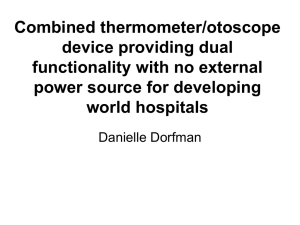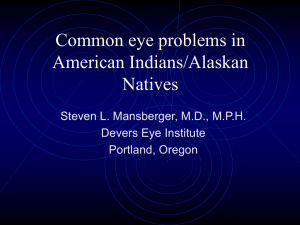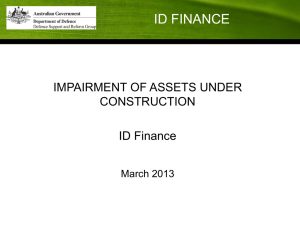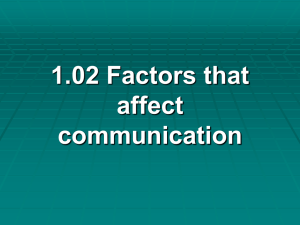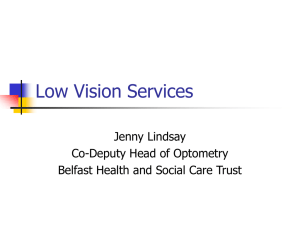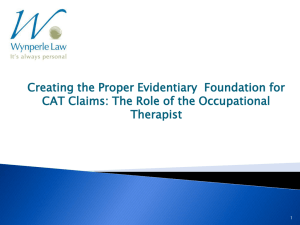CAT Impairment - Canadian Academy of Psychologists in Disability
advertisement
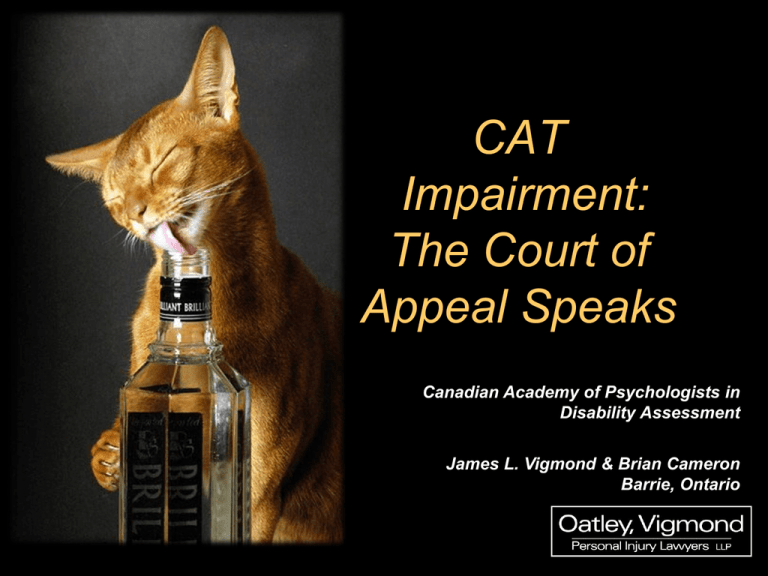
CAT Impairment: The Court of Appeal Speaks Canadian Academy of Psychologists in Disability Assessment James L. Vigmond & Brian Cameron Barrie, Ontario Liu v. 1226021 Ontario Inc. • Multiple GCS scores 9 8 11 7 ? ? ? 10 Liu v. 1226021 Ontario Inc. • a score of 9 or less on the Glasgow Coma Scale, ... according to a test administered within a reasonable period of time after the incident by a person trained for that purpose.... Liu v. 1226021 Ontario Inc. • • • • • • • Timeline 8:15 crash Ambulance arrives at 8:31 GCS of 3 8:43 – GCS of 8 8:55 GCS of 12 8:57 GCS of 14 Liu v. 1226021 Ontario Inc. • Trial – all about recovery of health care costs • Jury awards $800,000 in future care costs • Trial Judge makes two key findings • There was a brain impairment and a GCS of 9 or less • Trial Judge ruled the Plaintiff was not CAT Liu v. 1226021 Ontario Inc. • Defence argued that there was a score of 10 or higher within a reasonable time • Overturned by the Court of Appeal • The trial Judge erred in equating the statutory test to a medical test McLinden v. Payne • Multiple Catastrophic Impairment applications • 2006 – Not CAT – Plaintiff accepted this • 2009 – New assessment - CAT • Formulation of the Material Change in Condition test • Application of the MCC test • The Baseline Assessment • Materiality • Intra and Inter Observer Variances • Timing Kusnierz v. Economical The Resurgence of Desbiens Kusnierz v. Economical • • • • The trial decision The case for the respondent (Economical) The case for the appellant (Kusnierz) The decision of the Court of Appeal Kusnierz • • • • Decision of Court of Appeal No tort claim Amputation “Mr. Kusnierz was a credible and honest witness who did not embellish his evidence. He has suffered much and continues to suffer from the results of his injuries. He deserves the sympathy of the court.” • Concept of ‘fairness’ is elusive Kusnierz • The Guides do not permit percentages to be assigned under Chapter 14 • Standardized assessments are not possible with mental and behavioural impairments • Legislature could have specified Chapter 14 impairments were included • Acknowledges the ‘gap’ for those having serious but not marked mental and behavioural impairments and significant physical impairments The Case for the Respondent (Economical) • Desbiens has no precedential value, being a trial level decision in a tort case • The Catastrophic Impairment designation was introduced as part of a package of reforms entitled the Automobile Rate Stability Act, which dramatically reduced no-fault benefits in order to stabilize auto insurance premiums (while restoring tort rights) • The Regulation specifically directs that evaluation of Catastrophic Impairment is to be ‘in accordance with the Guides’ The Case for the Respondent (Economical) • The Guides specifically direct the rater NOT to use percentages in Chapter 14, citing lack of certainty and reliability • Using clause (f) for mental and behavioural impairments would render clause (g) superfluous (under 2nd edition, a Class IV impairment = 55% WPI) • Post-ax, the legislation was amended to include single leg amputees as CAT The Case for the Appellant (Kusnierz) • The ‘Desbiens’ effect • There is nothing in the Guides that expressly prohibits the combination of psychological and physical impairments • The Guides provide concordant Tables The Case for the Appellant (Kusnierz) • What is the difference in assessing similar impairments with different causes? • The Guides provide specific examples of combining physical and Chapter 14 impairments in the Guides. It is therefore not absolutely forbidden • Such an interpretation would leave a ‘gap’ of those who have suffered serious but not catastrophic physical as well as psychological impairments The Case for the Appellant (Kusnierz) • The Guides may not be applied literally in all instances as they are being used for a purpose for which they were not intended • Earlier and later editions of the Guides use WPI percentages • Logically, WPI ratings, as with verbal ratings, are merely ways of EXPRESSING impairment • The exercise of clinical judgment is involved in both ways of expressing impairment The Case for the Appellant (Kusnierz) • Regardless of which method is used, estimates will never be capable of precise measurement • The SABS prevail over any provision of the Guides • Those most in need should have access to recover health care expenses • The definition of ‘impairment’ includes loss of a PSYCHOLOGICAL function The Court of Appeal • Desbiens reaffirmed • The definition of ‘catastrophic impairment’ is intended to be inclusive, rather than restrictive • ‘Impairment’ includes loss of a psychological function The Court of Appeal • Unfair to exclude people with significant overall impairments that would not be CAT under physical or psychological alone The Court of Appeal • The examples in the Guide indicate that combining is permissible ‘in accordance with the Guides’ The Court of Appeal • Promotes a goal of the Guides to assess the functional impairments to an individual in their totality The Court of Appeal • Plain language suggest combination is permissible • The legislation did not limit impairments to “physiological” Pastore v. Aviva The Meaning of ‘a’ Pastore v. Aviva: • The case for the respondent (Aviva) • The case for the appellant (Pastore) • Comments from the Court Pastore v. Aviva • Appeal heard January 19, 2012 • Divisional Court decision May 13, 2011 Pastore v. Aviva • • • • • • Fractured left ankle Right knee replacement 1 Class 4 impairment in ADLs 3 Class 3 impairments Class 3 ‘overall’ impairment Parties agreed she did not suffer a WPI of 55% Pastore v. Aviva • Two rulings 1. A finding of catastrophic Impairment must ‘consider’ or ‘account’ for all four areas of function • • • • ADL Social functioning Concentration, persistence and pace Deteriorating in work or a work-like setting • No specific finding that an ‘overall’ Class IV impairment was required – but you need an ‘overall assessment’ of all four areas of functioning Pastore v. Aviva 2. An assessment of impairment due to mental or behavioural disorders requires that pain which is a symptom of physical injury be excluded Dissent 1. An assessment of a single Marked impairment is sufficient 2. The Guides are subordinate to the SABS Arguments of the Appellant Pastore 1. Divisional court decision was preKusnierz 2. Impairment that results in ‘a’ Class IV impairment 3. No decisions contrary to Desbiens 4. Divisional Court erred in stating “The Guides do not outline a process that is concerned with the impairment of a function…” Arguments of the Appellant Pastore 5. A finding of Catastrophic Impairment is a legal test, not a medical test (Liu) 6. There is no reference to an “overall “ or “whole person” impairment in (g), as there is in (f) 7. There is no equivalent of a Combined Values Chart for interpreting combination of Classes of impairment Arguments of the Appellant Pastore 8. A Class lV Impairment by definition involves a significant impairment in 1 of 4 core areas of functioning “significantly impedes useful functioning” 9. The Guidelines make NO reference to “overall” impairment, contrary to the Interim DAC Guidelines that they replace Arguments of the Appellant Pastore 10. The FSCO arbitrators are the “experts” and appellate Courts should give them deference 11. The finding by the Arbitrator that you could not tease out the effects of pain from physical causes alone supersedes the admonition in the Guides to do just that Arguments for the Insurer 1. The Guides demonstrate a process of analysis that requires a consideration of all 4 areas of functioning. (“in accordance with the Guides) 2. The Guides imply in a determination of “overall” impairment in the single example used in Chapter 14 Arguments for the Insurer “The evaluator concluded that, overall, the young woman had marked mental or psychiatric impairment (class 4).” 3. The Superintendent's Guidelines state that: The SABS directs that catastrophic impairment is met when an individual reaches marked or extreme impairment due to mental or behavioural disorder Arguments for the Insurer And further: The Guidelines reference “a final classification of impairments due to mental and behavioural disorders.” Arguments for the Insurer 4. The ‘a’ argument is stated thusly: Is this an impairment that, in accordance with the AMA Guides, results in… a Class 4 impairment in a single area of functioning, or a Class 4 impairment in the overall level of functioning due to mental or behavioural disorder? Pastore v. Aviva Court of Appeal • Deference is accorded FSCO, a specialized tribunal whose arbitrators have expertise and experience in the interpretation of CAT impairment. • The Guides and CAT DAC Guidelines are silent on how many functions at Class 4 level impairment are required. Pastore v. Aviva Court of Appeal • The Arbitrator’s conclusion that “a” means a single impairment was reasonable. • The Arbitrator’s conclusion that it was not possible to eliminate the effect of impairments of pain from the impairments due to mental disorder was reasonable. The Proposed New Definition of Catastrophic Impairment ASIA IMPAIRMENT SCALE GLASGOW COMA OUTCOME SCALE (E) Eight-point GOSE GOSE Descriptor Key Features 1 Dead 2 Vegetative State 1. Unable to obey commands or say words 3 Severe Disability 1. Needs frequent help or someone to - Lower be around most of the time 4 Severe 1. Does not need frequent help - able to Disability-Upper be alone at home for up to 8 hours. 2. Not able to shop without assistance 3. Not able to travel locally without assistance 5 Moderate Disability - 1. Not able to work, or, only in a sheltered or nonLower competitive position 2. Unable to participate(or, rarely if ever) in regular social and leisure activities outside home 3. Constant and intolerable (daily) disruption of family relationships or friendships due to psychological problems 6 Moderate Disability - 1. Able to work or study but at a reduced capacity Upper 2. Participates much less (less than half as often) in regular social and leisure activities outside home. 3. Frequent but tolerable (once per week) disruption of family relationships or friendships due to psychological problems 7 Good Recovery Lower 1. Participates at least half as often as before in regular social and leisure activities outside home. 2. Occasional disruption of family relationships or friendships due to psychological problems. 3. Other problems relating to the injury (headache, dizziness, tiredness, sensory sensitivity, slowness, memory failures, concentration problems) affect daily life. 8 Good Recovery Upper 1. Able to work to previous capacity 2. Able to resume regular social and leisure activities outside home. 3. No psychological problems resulting in ongoing family disruption or disruption to friendships GLOBAL ASSESSMENT OF FUNCTIONING (GAF SCALE) KOSCHI SCALE KOSCHI Scale definitions Category Definition 1 Death 2 Vegetative Breathes spontaneously; no evidence of verbal or non-verbal communication; no response to commands. 3A Severe disability Conscious, totally dependent; may be able to communicate; requires special educational/rehabilitation setting. 3B Severe disability Limited self-care abilities, predominantly dependent; may have meaningful communication; requires specialized educational/rehabilitation setting. KOSCHI Scale definitions Category Definition 4A Moderate disability Mostly independent for daily living, but needs a degree of supervision/help for physical or behavioral problems; has overt problems; may be in special ed/rehab or mainstream school with special needs assistance; behavioral problems may have caused patient to be excluded from school. 4B Moderate disability Age appropriately independent for daily living; but neurologic sequelae affects daily life including behavioral and learning difficulties; may have frequent headaches; likely to be in mainstream school with/without special needs assistance. 5A Good recovery Appears to have made a full functional recovery, but has residual pathology attributable to TBI; may suffer headaches that do not affect school or social life. 5B Good recovery The information available implies that the child has made a complete recovery; no sequelae are identified.
